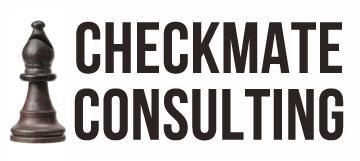For brands on social media, there’s always a balance between sales and social.
You want to make personal connections with your followers, but you want to have them connect with products. You want to build communities, but you want your communities to be mobilized. You want a return on investment, but you don’t want to alienate your followers by pushing your products over and over again.
That’s why it’s so important to have a social media strategy that has a good mix of content featuring hard, soft and no-sales language at all. Consider it fluff, but it should never be considered filler. Content that engages with your followers authentically with no salesmanship, while speaking to the mission of your brand, can be a fun way to engage with your followers and build brand awareness. They’ll like and share your content without even realizing it’s a billboard for your brand’s logo and mission.
This concept, though, is so hard for some digital marketers to understand. If there aren’t clicks, if there aren’t sales, if there’s not a point of conversion, they feel the content is a missed opportunity at best and a waste of time at worst. But the next time I get into this ongoing debate with a digital marketing friend, I’ll have a secret weapon: a snail.
At Checkmate Consulting, I began managing Diet Center Cincinnati‘s Facebook page less than two months ago. The page’s presence was small: it only had 110 likes at the time of posting this graphic on Jan. 6. But although its presence was tiny, my goals for the brand on social were big. My No. 1 goal in my first 90 days was to help legitimize this brand in its local community, where weight loss center claims and services are automatically met with skepticism, and to increase brand awareness dramatically.
So, the first week of 2016, I made the above graphic in Canva (a handy tool) based on a suggestion by my client. She had seen a version of this graphic above online somewhere and thought it would be cute to post on Diet Center’s Facebook page. I created the above graphic and posted it on Facebook with this caption:
“We believe in you. Do you? #winatlosing”
The caption was short, the message was simple, and it got a response from Diet Center’s small but engaged community on Facebook. So, a couple of days later, I boosted the post for $25 and 14 days.
And the engagement started pouring in.
Hundreds of likes were made to the post, and people started commenting on the post as well bits of encouragement about their own slow but steady journeys to success. But most valuable, the post in 14 days received 73 shares and counting — with 52 shares originating from unpaid views of the post. Individuals who had never heard of Diet Center were sharing our content that shared Diet Center’s mission: that wellness in achievable, if you just keep trying.
By spending 10 minutes creating a clever graphic and $25 to promote this post to Diet Center’s target audience, more than 18,000 people in the Cincinnati, Ohio community ended up seeing this graphic that featured Diet Center’s logo and hashtag.
There wasn’t a conversion page, there wasn’t a sign up form, but we had more than 100 profile views while this post was being boosted. We received more than 20 page likes from this post (a 22 percent increase) and every person who shared this post was in Diet Center’s target demographic: Cincinnati area women, ages 25-60.
But most importantly, Diet Center in all of those eyes was seen as a brand that cares about people and their progress. Telling the story of a brand and making real, authentic connections with people makes turns them from followers to fans. And bottom line, for my sales-minded friends? Fans buy products, and if they receive a positive experience from a product, they become ambassadors for a brand.
Oh, and one last thing: One person who saw this snail messaged the Facebook page to get in touch with a representative — and ended up registering for a diet plan at the Center.
There’s a time and place for a snail for every brand on social media. What’s your snail content?

